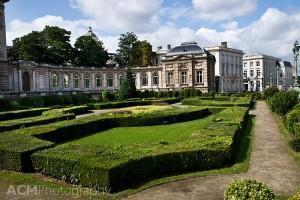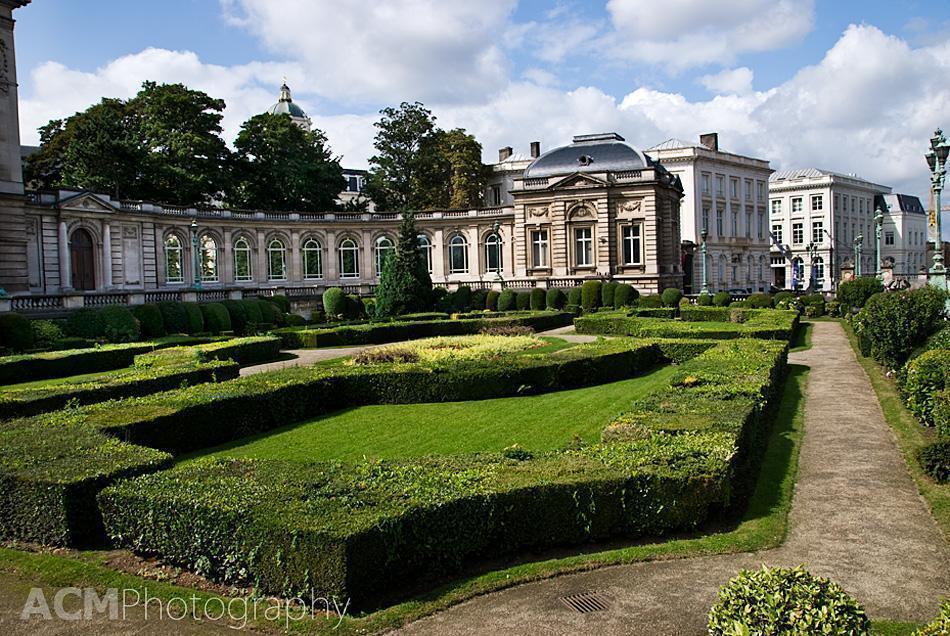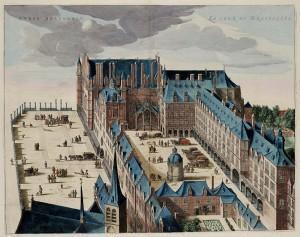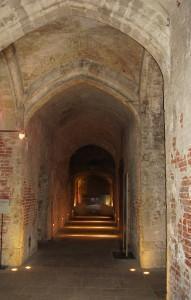
The current Palace Royal, Brussels, and entrance to the Coudenberg
Beneath one of its busiest squares, Brussels has a secret. As tourists dodge traffic and trams on Place Royal, darting between the Magritte Museum and the Bozar, most of them are unaware that right beneath their feet is a hidden palace – Coudenberg, the former palace of Brussels.
Once upon a time, in the middle ages, a grand palace overlooked the city of Brussels, from Coudenberg hill. These days, a new palace (and a handful of museums) sits in its place. However, the remains of Coudenberg Palace and Rue Isabelle, an ancient thoroughfare , still exist – underground.
At the far end of the current Royal Palace in Brussels, sits the entrance to the BelVue Museum. This is also the entry point for your journey underground to ancient Coudenberg.
History of Coudenberg Palace
Coudenberg Palace dates back to the 12th century, when it was constructed by the Dukes of Brabant. Later, the Duchy fell to the Dukes of Burgundy and in the 1400s they constructed a prestigious banqueting hall called the Aula Magna.
In the 16th century, Charles V ordered the construction of an imposing Gothic chapel. Over the following years the Coudenberg Palace was expanded and enriched.
Coudenberg’s glory days went up in smoke, literally, in 1731, when a fire, started by candles, destroyed half of the palace. It sat empty for 40 years, until the 1770s, when it was flattened to make way for the new Place Royal; the Neo-classical buildings we still see in Brussels today.
The remains of Coudenburg weren’t completely lost, however. In fact, the old cellars were preserved under the current square and served as storage spaces for the new buildings. It wasn’t until 1986 however that the remains of Coudenburg became an archaeological site.
The site was covered with a concrete ceiling and, in 2000, opened to the public. In March of 2009, a museum containing information about the former palace and discoveries from the archaeological digs opened and can be visited today.
Inside the Coudenberg Archaeological Site
These days, as you descend into the site, you can walk down the former Rue Isabelle. It is a strange experience to walk this quiet cobbled street while you hear the rumbling of trams overhead.
You can wander through the cellars of the main palace building, as well as the chapel and the Aula Magna. A metal walkway leads you through the former kitchens of the banqueting hall, where excavation continues to take place.
A visit to the Coudenberg Palace Archaeological site is an interesting way to pass a few rainy hours in Brussels. Combine it with a trip to the BelVue Museum above, and you can pass an afternoon learning about Brussels’ past and present.
Coudenberg, Former Palace of Brussels
Entrance via BELvue museum
Mont des Arts
Place des Palais 7
1000 Brussels
For more great castle articles, be sure to visit our Castles in Belgium page where you’ll find links to all of the castles in our little country.
- The Ultimate List of Castle Hotels in Belgium - June 10, 2019
- The Ultimate Guide to the Best Things to Do in Normandy, France - February 5, 2019
- The Ultimate Guide to the Best Restaurants in Brussels, Belgium - January 11, 2019



